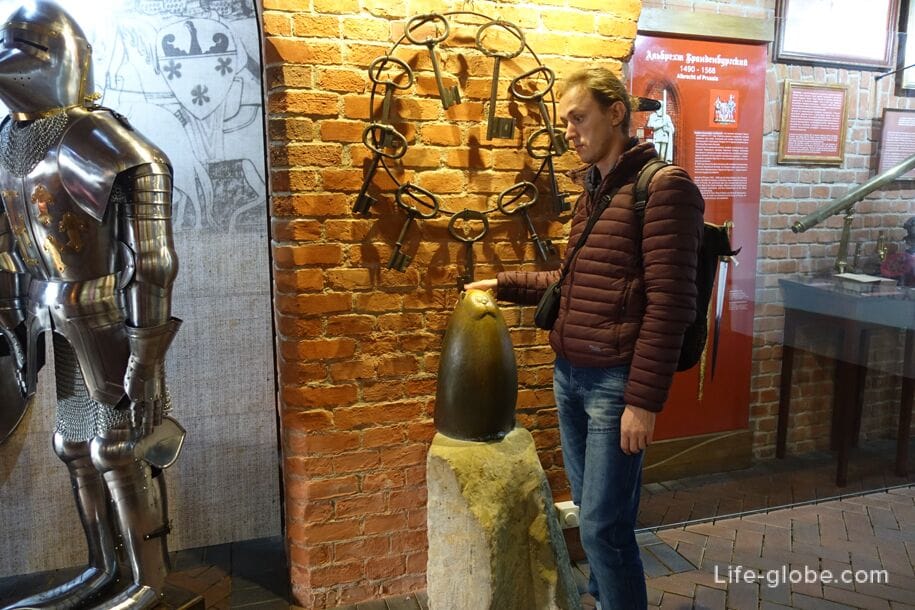The King's Gate in Kaliningrad (German name Königstor) is one of the seven surviving city gates of Konigsberg (now Kaliningrad).
Once the King's Gate was part of the fortification in Konigsberg and served both for its intended purpose - entry and exit from/ to the city (a) and as one of the fortifications of the fortress city of Konigsberg.
The King's Gate is located at the intersection of Frunze Street/Yuri Gagarin and the Lithuanian Shaft in Kaliningrad.
Currently, the King's Gate is one of the most interesting in Kaliningrad. The gate is included in the list of sights of the city and is one of the objects of the recommended route "Kaliningrad fortification".

Architecture of the King's Gate
The gate is made of red brick in a pronounced Neo-Gothic style.
They consist of a single passage 4.5 meters wide, flanked by former casemates. Currently, the passage is blocked by walls and windows, thus the King's Gate forms a single building.
The first tier of the gate is decorated with three portals. On the second, central facade, there are three niches in which three high reliefs are placed: the first king of Prussia, Frederick I, the reformer Duke Albrecht and the founder of the city, King Ottokar II of Bohemia.
The coats of arms of the three sovereigns are located under the sculptures, and the coats of arms of the Prussian lands of Sambia and Natangia rise above the heads of the "fathers of Konigsberg".
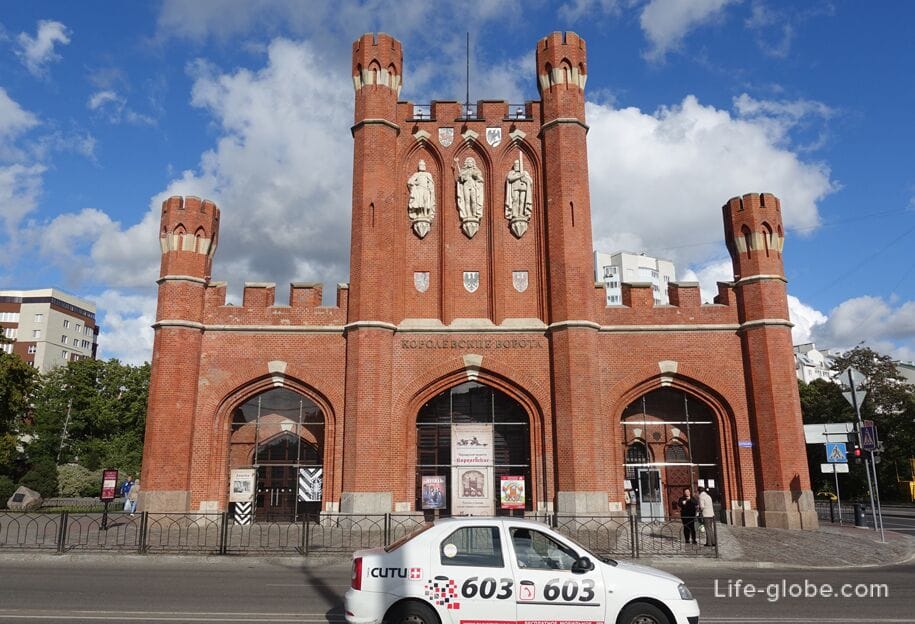
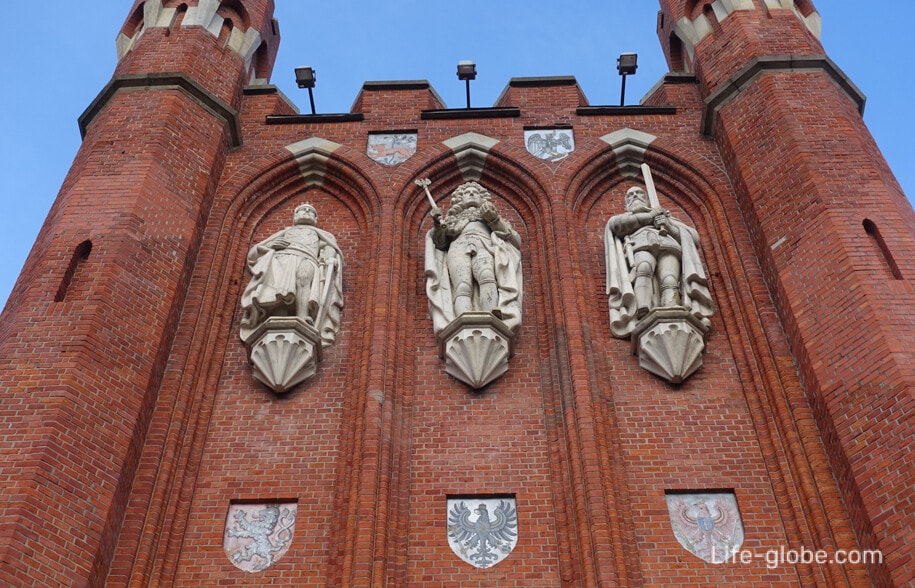
A Brief history of the Royal Gate
Konigsberg
The laying of the Royal Gate took place in August 1843 with the participation of nobles and the King of Prussia Friedrich Wilhelm IV. The construction was completed in 1850.
The Royal Gate was built on the site of the old gate, demolished in the first half of the 19th century during the modernization of the city fortifications. At that time, the gates were called Gumbinnen (Gumbinner Tor). The name "Gumbinnen" gate was given due to the fact that the road leading to Gumbinnen (now the city of Gusev, Kaliningrad region) passed through it. The gates received their current name "Royal" in 1811, after the name of the street on which they were located - Königstrasse (Königstrasse). The street got its name because the Prussian kings followed it to the military reviews from the Konigsberg Castle in the suburb of Duvau.
According to its intended purpose, the Royal Gate did not last long. The rapid development of military affairs in the 19th century led to the fact that by the end of the century the Second fortification could not protect the city from enemies. In 1910, all the gates were sold by the War Ministry to the city administration.
Later, in the XX century, the ramparts adjacent to the gate on the sides and serving as part of the defensive system of Konigsberg were demolished, as they interfered with the increasing automobile traffic. In the process of modernization of the city, the gate has become a small island structure, more fulfilling the function of a certain attraction.
The Second World War radically changed the history and appearance of the city, erasing from the face of the earth or severely damaging many architectural monuments. The Royal Gates were also in extremely serious condition: the sculptures on the gates were almost completely destroyed (during the war, the sculptures had their heads cut off), serious losses were present in the brickwork of the facades and interiors, there were no communications.
Old photos of the Royal Gate of Konigsberg


Scheme of the King's Gates of Konigsberg
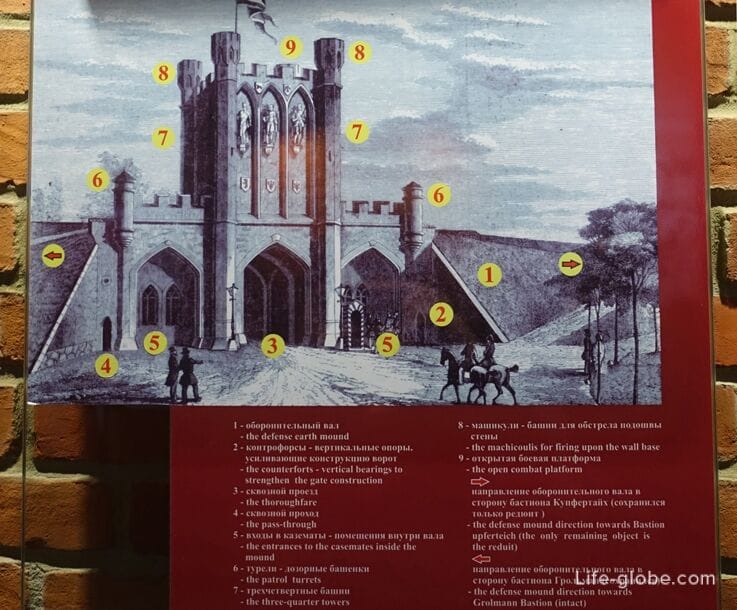
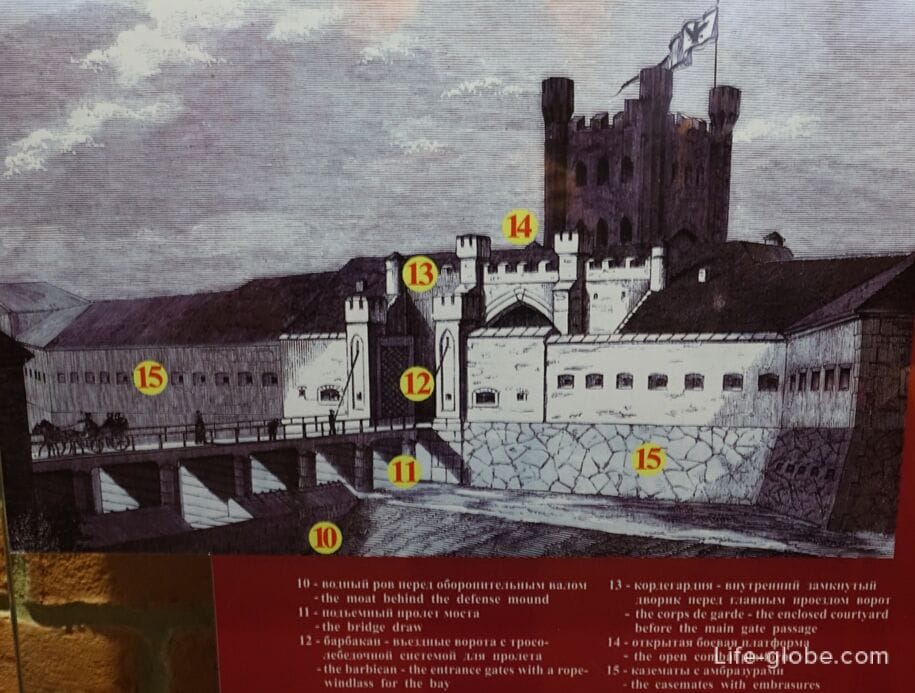
The Royal Gate in the Soviet period and now
During the Soviet period, the gates were not used, remaining in an abandoned state for a long time. After that, a bookstore was located in the gate and the attempts of the Soviet authorities to destroy the evidence of the pre-war history of the city did not stop, but they did not manage to do this. Otherwise, the Royal Gate would have suffered the same fate as Konigsberg Castle.
By the beginning of perestroika, the Royal Gates had become unattended again and were gradually being destroyed. For some time the gate was used as a warehouse and store. In 1990, a cooperative cafe was located in the gate.
By 1991, the gates were abandoned again and for a long time nothing in their fate changed.
But now, by June 2005 - a turning point. This year we celebrated the 750th anniversary of the city's existence and decided to restore the gates by the solemn date.
In February 2005, the gate was transferred to the Museum of the World Ocean. The Government of the Russian Federation, the administration of the Kaliningrad region, the Mayor's office, embassies, consulates and many other organizations helped the museum in their revival. Polish restorers worked on the restoration of the facades, restorers from St. Petersburg and Kaliningrad performed the interior work, specialists of the highest category of the Hermitage were engaged in the restoration of sculptures, Kaliningrad artists restored the coats of arms, and Kaliningrad firms were engaged in landscaping. The greatest difficulty was the restoration of sculptures on the facade of the gate. To restore the sculptures from the Scientific Archive of Warsaw, a rare snapshot of the Royal Gate with a clear image of the sculptures was provided. A high-quality image of the sword of Duke Albrecht and the scepter of King Frederick I was provided by the Berlin Parks and Gardens Foundation.
The restored Royal Gate has become the main symbol of the 750th anniversary.
Currently, the Royal Gate serves as a triumphal arch, after restoration, more like a small castle.
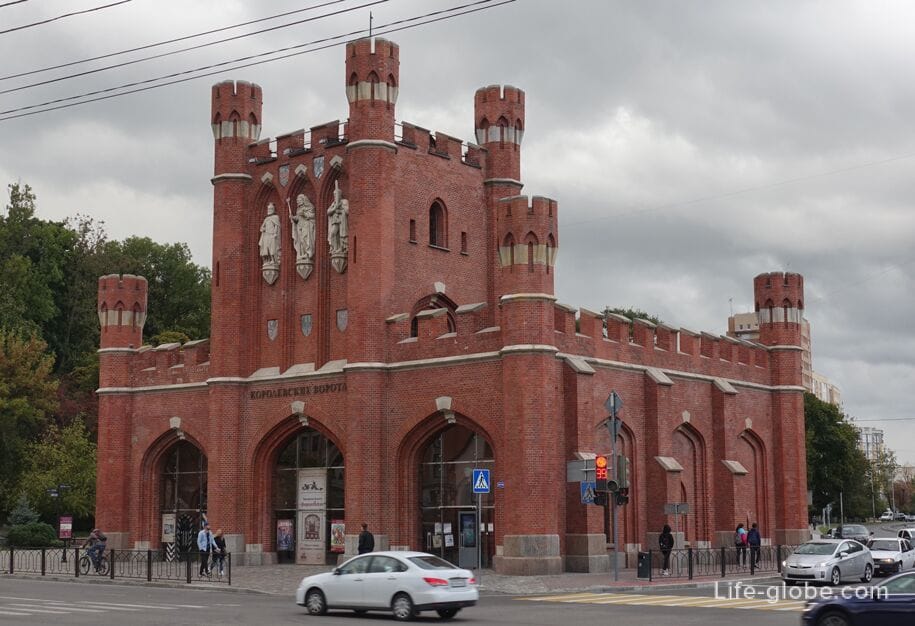
The museum - Historical and Cultural Center "The Great Embassy" is located in the Royal Gate. The museum has expositions dedicated to the emergence and development of Koenigsberg, visits to Koenigsberg by outstanding people, the history of diplomatic Koenigsberg-Kaliningrad, as well as a sculpture of a Prussian cat, they say, fulfilling wishes, one has only to scratch it behind the ear. More about the museum at the Royal Gate...
